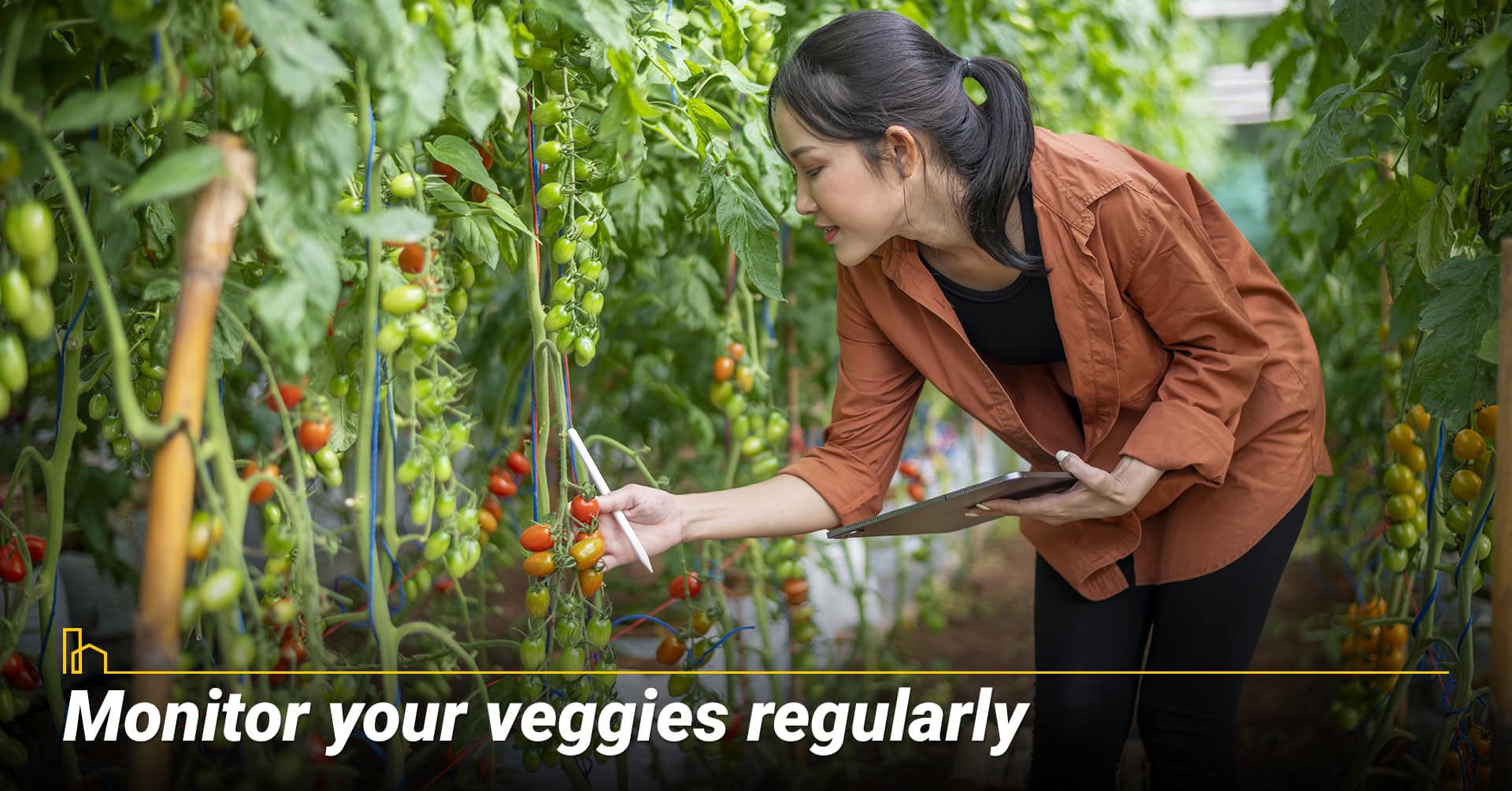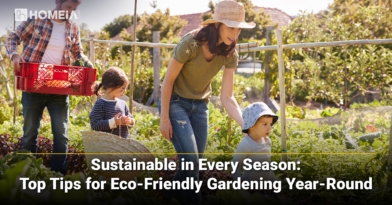5 Foolproof Ways to Grow Vegetables Indoors
- Author:by The HOMEiA Team
- Category: Home Improvement

In today’s economy, buying vegetables from the local market or the neighborhood grocery store will cost an arm and a leg. But, of course, skimping on your greens is not ideal either. Vegetables are essential to a person’s diet, whether you’re a gym rat, a yoga enthusiast, a health nut, or any other person who eats food.
“So how can I get my vegetables without spending too much?” you may ask. The answer is simple: You have to grow your own crops. It’s a solution that hits two birds with one stone; you get to save money and get your supply of greens at the same time.
Planting, tending, and harvesting vegetables might seem like a tedious job, but it’s much easier than one might think. Even with limited space and little experience, you can grow your own green garden–especially if you follow this handy guide.
By reading this article, you’ll get to know the five foolproof ways of growing your own vegetables inside of your home. No need for elaborate plots or expensive greenhouses. A corner in your living room is all you need. You’ll also be informed of the best crops for indoor gardening, as well as different tips and tricks of the trade. Read closely and get your garden gloves ready.
Table of Contents:
1. Set up a vertical gardening system

Hydroponic towers are steadily getting popular in the agricultural industry, and for good reason! Instead of having flat, horizontal gardens that take up too much floor space, using a vertical hydroponic tower allows a gardener to plant more crops in a much smaller ground space.
Like a highly improved trellis, a vertical gardening system is a structure that supports the growth of numerous plants using space-saving and energy-efficient technology. The hydroponic indoor garden by Gardyn offers this very design, aimed to make urban farming and indoor gardening accessible for everyone.
This innovative gardening system makes it possible to grow crops in your living space all year round. Thanks to its strategically placed LED lights, 5-gallon water tank, and revolutionary water system, the Gardyn Home Kit 4.0 allows its users to grow a lot of greens with very little effort.
All you need to do is set up the unit which only takes 1-2 feet of floor space. Up to 30 seed pods can be planted at a time, and it only takes 5-6 weeks before the crops are ready for harvest. When it comes to DIY urban farming, nothing beats Gardyn.
4 indoor Gardening Tips During Quarantine
Collecting plants or raising a vegetable garden provides you with a sense of purpose and makes you feel empowered since you’re caring for another living thing…
2. Know which plants grow best indoors

There are over 100 plants that you can grow indoors. From microgreens to herbs, here are some of the best vegetables that are low maintenance but high in nutrients:
- Beans. Even grade school students grow beans for their science projects. If you’re looking for a versatile and nutritious crop to grow without breaking a sweat, beans are the plants for you.
- Microgreens. The best thing about microgreens is that they can be harvested relatively quickly. This is because microgreens are essentially just edible young shoots of various veggies which include broccoli, mustard greens, and the like.
- Cherry tomatoes. Typical tomatoes take more effort to grow indoors, but the cherry variety is a whole different story. This specific type of tomato can grow with just natural light, making it great for indoor farming.
- Lettuce. One of the most popular indoor garden vegetables, lettuce grows quickly and doesn’t need much tending to grow. Thanks to its short roots that require little to no soil, this veggie is a favorite among green-thumb gardeners and newbie farmers alike.
- Lemongrass. Although it is classified as a tropical herb, lemongrass can also be grown during winter seasons indoors. It is grown from either seeds or cuttings, and needs 6-8 hours of natural sunlight every day, so make sure to place this plant near a window.
- Spinach. Spinach is a beginner-friendly veggie that can be grown well indoors just as it can be grown outdoors. It can take a matter of four weeks from planting to harvesting. And the best thing is that it sprouts back up again if you harvest the tops while leaving the base healthy in the soil.
Choosing the Perfect Patio Cover: A Comprehensive Guide
In a world with a lot of choices for just about everything, patio covers are no exception, so choosing the right one for your home can be overwhelming. We will take you through everything you need to know about patio covers, so you can make the best decision for your patio, your home, and your lifestyle…
- Peppers. A variety of sweet and spicy peppers can be the perfect plants for your indoor garden. Although they need a little more care, peppers can germinate in as quick as two weeks.
- Radishes. Both nutritious and easy to grow, radishes are the perfect veggies to plant in indoor gardens, whether it be in a hydroponic tower or a simple plant pot. These leafy root vegetables only take approximately one month to harvest.
- Carrots. A well-known ingredient to just about any hearty stew, carrots are a popular choice in indoor gardens. However, they can be a bit tricky to grow, as they require a lot of moisture or sometimes even a layer of peat moss to keep them from drying. It’s a small price to pay for such a good crop.
- Peas. Pea plants might require a lot of attention to grow, but they yield so much potential. Most of their parts are edible, from the pods to the shoots and even the flowers.
- Chives. Onions are notoriously difficult to grow indoors. However, their close cousins, chives, grow nicely inside when placed on a windowsill or a vertical garden system. Fresh chives can be used as a great substitute for onions.
- Kale. A staple in salad recipes, these leafy greens grow better in cool temperatures, making them a great crop for indoor farming. They don’t need a lot of light either, and are just the perfect plant for your home.
Enduring Home Decor: The Benefits of Artificial Flowers
In this article, we’ll talk about the pros and cons of artificial plants and flowers, how to find high-quality options, and how to seamlessly incorporate them into your home…
3. Remember these handy green-thumb tips

Gardening is both a science and an art. Growing your own vegetables, especially indoors, can be challenging. It’s best to keep in mind the following tips:
- Choose a good indoor space. When choosing where to place your pots or garden systems, opt for near a window or under a skylight. Plants need sunlight to grow, and the best area for an indoor garden is where a cat might lie down to bask under the sun.
- Avoid extreme cold and extreme heat. Most plants hate extremes. Some will wither due to frigid temperatures, so make sure to place them away from any air-conditioning units. Other plants wilt under too much heat, so do not place them near a heater either.
- Water as needed. Contrary to popular belief, vegetable plants do not need to be watered every single day. Some of them require very little moisture and can be easily overwatered if not monitored well. The amount of water a plant needs can depend on various factors such as the size of the pot and the type of soil used. Make sure to learn just how much water each type of vegetable needs before doing the task.
- Label your pots/cells. During the beginning of planting and up to the germination stage, make sure to label your plant pots and seed cells. This will help you keep track of your vegetables, especially if you are planting different kinds side by side.
- Gather your supplies. Like cooking, it’s best to have all your ingredients together when preparing for your indoor garden. Aside from the usual seeds and garden systems, you may also need materials such as seed trays, drip trays, and fertilizer.
Unlocking the Future of Landscape Design: From Imagination to Reality
Beyond aesthetics, a well-designed yard can substantially impact property value and resale potential. Homebuyers are increasingly looking for houses that offer a complete package, and attractive, thoughtfully designed surroundings can significantly boost a property’s appeal…
- Ensure proper air circulation. Proper air circulation is vital in keeping your vegetables in good health. Placing them next to an open window or a fan can give them enough carbon dioxide to stay in shape. If proper air circulation is lacking, it may lead to root rot and fungal infections.
- Select your containers wisely. Containers play a huge role in a plant’s growth. Certain vegetables require specific sizes of pots to ensure that the produce grows well and is not overcrowded. Make sure that your containers have draining holes and are placed over a drip tray. It also doesn’t hurt to choose containers with pretty designs to match the aesthetic of your home.
4. Monitor your veggies regularly

Although plants can grow with or without daily checkups, it’s best to keep an eye on your garden every day. This practice will ensure that your plants grow well. Daily monitoring can also help you spot any signs of distress in your veggies.
Red flags that you should look out for include:
- Molds or mildew in the soil
- Spots or tears in the leaves
- Presence of pests and insects
Having an automatic monitor can also save you time and effort. Garden systems, like the Gardyn Home Kit 4.0, are equipped with 24/7 CCTV recording which mechanically detects all your plants’ needs.
Top 12 Tips for Eco-Friendly Gardening Year-Round
Gardening is not just a hobby – it is a way of life. For many, tending to plants and watching them grow is therapeutic. But as we become more environmentally conscious, there’s a growing need to ensure our gardening practices are sustainable…
5. Harvest mindfully

The trick to having a sustainable indoor garden is in the harvest. During your first bloom, you might be tempted to pick at your heart’s desire, but this practice can make it difficult to start a new cycle.
Instead, be mindful. First, know if the plants you are about to harvest can sprout again or if you need to dig out the roots. Vegetables like lettuce, kale, and spinach can regrow for as long as the roots and bases are healthy.
It is also advisable to use a knife, a pair of scissors, or pruners to harvest your crops. Picking them by hand can sometimes lead to tearing or breaking, which could leave the plants infected. If such tools are unavailable during harvest, use your fingernails to pinch off the edible parts of the plant.
Remember to grow with patience, and harvest mindfully. After following the five tips in this article, as well as doing research for each specific plant, you will be well on your way to having a lovely indoor garden of your own.





















